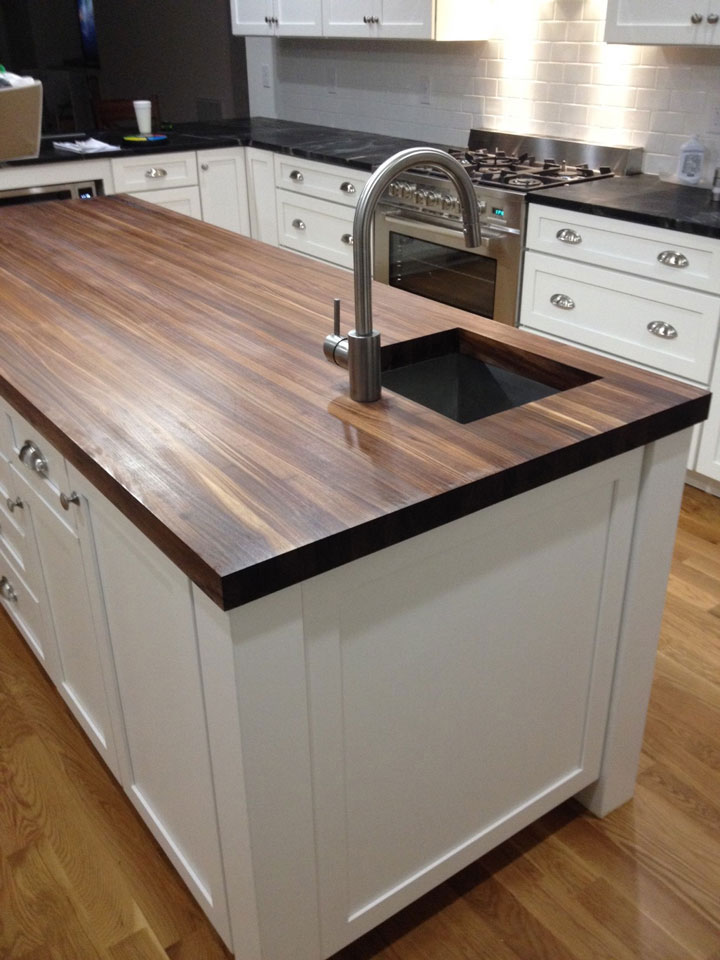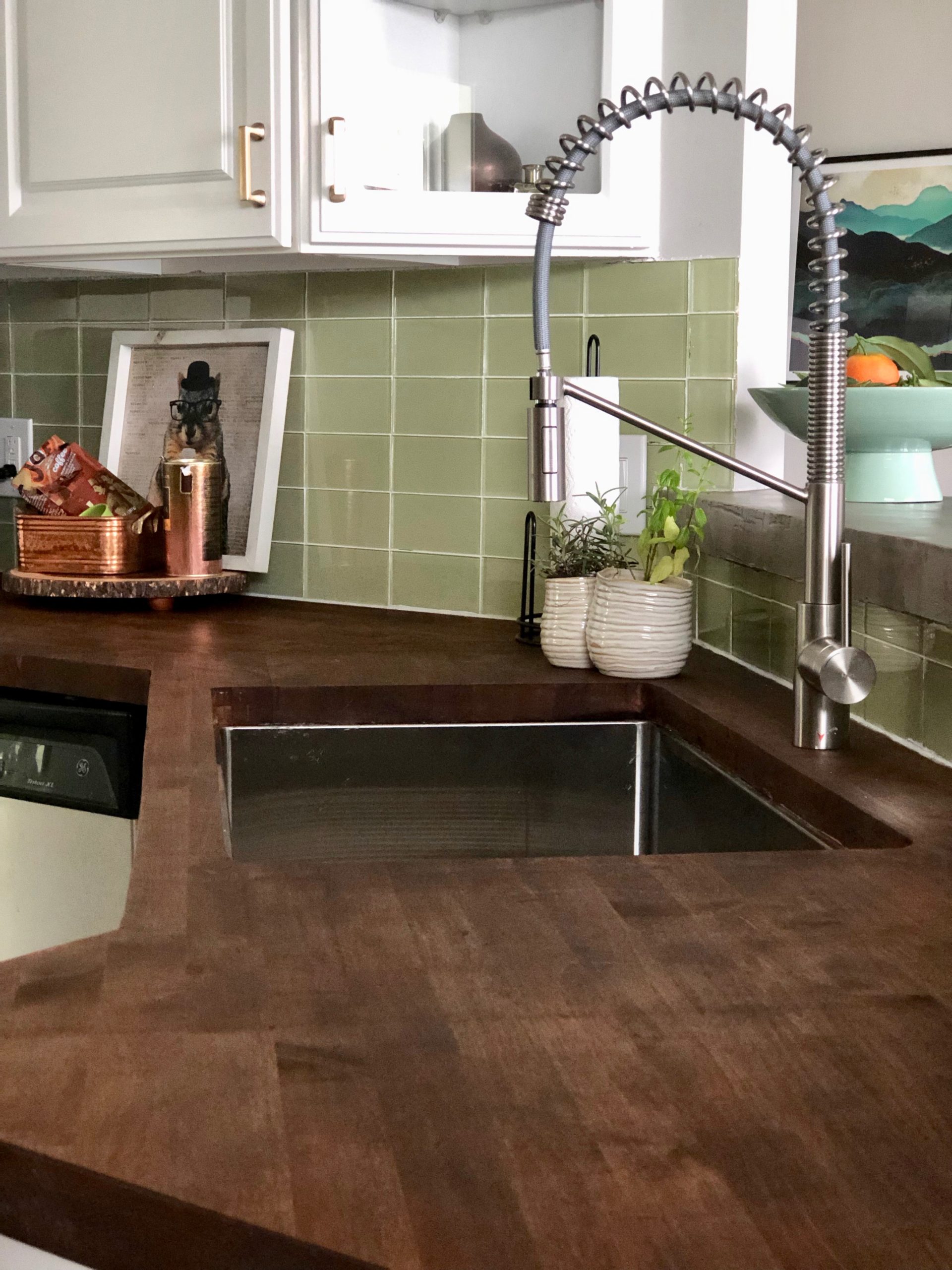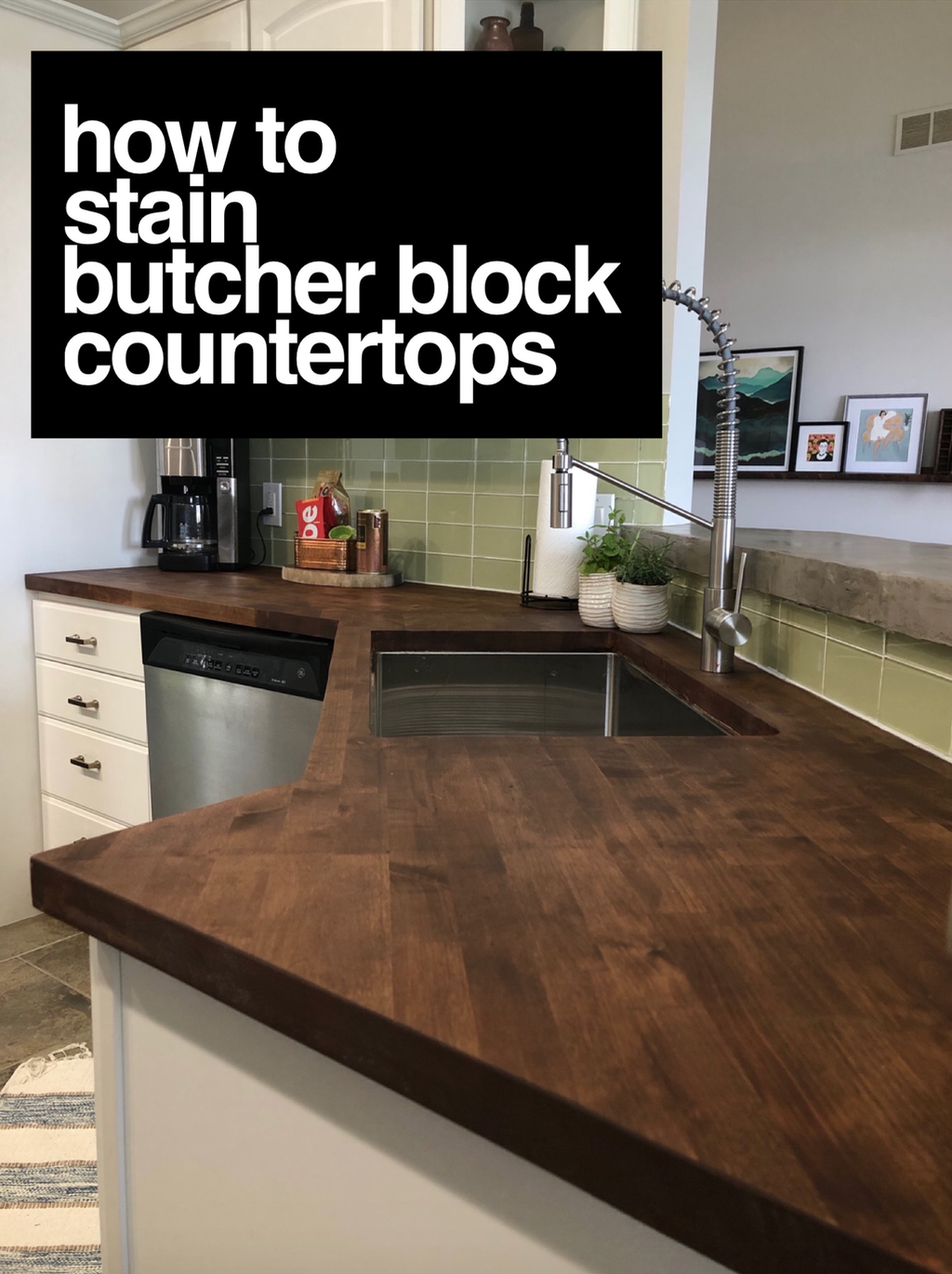Butcher block countertops, renowned for their natural beauty and warmth, can indeed be stained to enhance their aesthetic appeal or to match specific design preferences. Staining a butcher block countertop involves several steps, each critical to ensuring a smooth, durable, and visually appealing finish. These countertops are typically made from hardwoods like maple, oak, and walnut, which are excellent candidates for staining due to their dense grain and durability. The staining process begins with proper preparation, including thorough sanding to remove any existing finish and to smooth out the surface. This step is crucial as it allows the stain to penetrate evenly and deeply into the wood, providing a uniform color and enhancing the natural grain.
Once the surface is adequately prepared, choosing the right type of stain is essential. There are various types of wood stains available, including oil-based, water-based, gel, and dye stains. Oil-based stains are popular for their deep penetration and rich color, while water-based stains are known for their ease of cleanup and lower odor. Gel stains sit on the surface, offering a more controlled application, and dye stains provide vibrant colors. The choice depends on the desired finish, the type of wood, and the specific use of the countertop. For instance, a kitchen countertop might benefit from a more durable, penetrating stain that can withstand heavy use and frequent cleaning.
Application of the stain should be done carefully to achieve an even coat. This usually involves applying the stain with a brush, rag, or sponge in the direction of the wood grain. After the initial application, it’s crucial to wipe off any excess stain with a clean cloth to prevent blotches and ensure a uniform appearance. Depending on the wood type and desired color intensity, multiple coats may be necessary. Each coat should be allowed to dry thoroughly before applying the next. This drying time can vary depending on the type of stain used and environmental conditions, but generally, it ranges from a few hours to overnight.
After achieving the desired stain color, sealing the butcher block countertop is the next step. Sealants protect the wood from moisture, stains, and daily wear and tear, extending the countertop’s life and maintaining its appearance. There are several options for sealing, including polyurethane, mineral oil, and tung oil. Polyurethane provides a durable, waterproof barrier and is ideal for heavily used surfaces. Mineral oil is food-safe and easy to reapply, making it suitable for countertops used for food preparation. Tung oil offers a natural, durable finish that enhances the wood’s color and grain.
Maintaining a stained butcher block countertop involves regular cleaning and periodic reapplication of the finish. For daily cleaning, a mild soap and water solution is usually sufficient. It’s important to avoid harsh chemicals and abrasive cleaners that can damage the finish. Spills should be wiped up promptly to prevent staining, and hot pots or pans should never be placed directly on the wood surface to avoid burn marks. Depending on the type of finish, the countertop may need to be resealed periodically to maintain its protective barrier and appearance.
Choosing to stain a butcher block countertop also allows for customization to fit various design styles. A dark stain can give a kitchen a modern, sleek look, while a lighter stain can create a more rustic or traditional ambiance. Staining also allows for creativity in matching the countertop with other kitchen elements such as cabinets, floors, and backsplashes. The versatility of stained butcher block countertops makes them a popular choice for homeowners looking to personalize their kitchen space.
However, there are some considerations to keep in mind before deciding to stain a butcher block countertop. The type of wood and its natural color can affect the final result of the stain. For instance, hardwoods with tight grains like maple might not absorb stain as evenly as more porous woods like oak. It’s advisable to test the stain on a small, inconspicuous area of the countertop or on a scrap piece of the same wood to see how it reacts and to ensure satisfaction with the final color.
Another factor to consider is the countertop’s use. For countertops frequently used for cutting and food preparation, choosing a food-safe stain and finish is paramount. While many commercial stains and finishes are not food-safe, there are options like pure tung oil and beeswax that provide a natural, non-toxic finish. It’s important to thoroughly research and choose products that are safe for food contact if the countertop will be used for these purposes.

Staining butcher block countertops can also rejuvenate an old or worn surface, giving it a new lease on life. Over time, butcher block countertops can develop scratches, stains, and wear marks. Sanding down the surface and applying a fresh stain can restore the countertop’s appearance and extend its usability. This process not only improves the aesthetics but also can add value to a home by enhancing one of its key features.
Common mistakes to avoid when staining butcher block countertops include insufficient sanding, which can lead to uneven stain absorption and a blotchy finish. Using the wrong type of stain for the specific wood can also result in undesirable outcomes. For instance, using a gel stain on a very dense wood might prevent proper penetration, leading to a surface finish that can chip or peel over time. It’s also important not to rush the drying process between coats; insufficient drying time can result in a tacky surface that doesn’t properly protect the wood. Failing to apply a proper sealant after staining can leave the countertop vulnerable to moisture damage and stains from everyday use.
Another mistake is neglecting to test the stain on a small area before full application. Different woods can react differently to stains, and the final color can vary from what’s shown on the can or sample. Testing allows for adjustments in technique or choice of stain to ensure the desired outcome. Additionally, not wiping off excess stain after application can result in a sticky surface and uneven coloration. Proper technique involves applying the stain, letting it sit for a few minutes to penetrate the wood, and then wiping off the excess with a clean cloth.
Ignoring proper ventilation during the staining process can also be a significant mistake. Many stains and finishes contain volatile organic compounds (VOCs) that can be harmful if inhaled. Working in a well-ventilated area, wearing protective gloves and masks, and following all safety instructions on the product label are essential steps to ensure a safe and successful staining process.
Lastly, failing to maintain the stained and sealed countertop can lead to premature wear and damage. Regular cleaning with appropriate products, avoiding excessive moisture, and periodically resealing the countertop will help maintain its appearance and durability. With proper care, a stained butcher block countertop can remain a beautiful and functional feature in a kitchen for many years.

Common Mistakes to Avoid:
Insufficient Sanding: Skipping or inadequately sanding the countertop can lead to uneven stain absorption and a blotchy finish.
Wrong Stain Choice: Using the wrong type of stain for the specific wood type can result in poor penetration and a surface prone to chipping or peeling.
Rushing Drying Time: Not allowing sufficient drying time between coats can result in a tacky surface that doesn’t properly protect the wood.
Skipping Sealant: Failing to apply a proper sealant after staining can leave the countertop vulnerable to moisture and stains.
No Stain Testing: Neglecting to test the stain on a small area before full application can lead to unexpected color results.
Poor Ventilation: Ignoring proper ventilation can expose you to harmful VOCs from stains and finishes.
Improper Maintenance: Not maintaining the stained and sealed countertop can lead to premature wear and damage.
Can all types of wood used in butcher block countertops be stained?
Yes, most types of wood used in butcher block countertops can be stained, but the effectiveness and appearance can vary. Hardwoods like maple, oak, and walnut are commonly used and take stain well, although their dense grain may require careful application and multiple coats for even coverage. Testing the stain on a small, inconspicuous area or a scrap piece of the same wood is recommended to see how the wood reacts and to ensure the desired color.
What is the best type of stain to use on a butcher block countertop?
The best type of stain depends on your specific needs and the type of wood. Oil-based stains are popular for their deep penetration and rich color, making them ideal for a durable finish. Water-based stains are easier to clean up and have lower odors, suitable for those sensitive to fumes. Gel stains are good for vertical surfaces or woods with uneven grains, while dye stains offer vibrant, consistent colors. Consider the final use of the countertop and choose a stain that provides the desired appearance and durability.
How often should I reseal my stained butcher block countertop?
The frequency of resealing depends on the type of sealant used and the level of use the countertop endures. Generally, polyurethane-sealed countertops need resealing every few years, while those sealed with mineral oil or tung oil may require more frequent maintenance, such as monthly or quarterly reapplications. Regularly inspect the countertop for signs of wear or dryness, and reapply the sealant as needed to maintain its protective barrier and appearance.
Is it safe to prepare food directly on a stained butcher block countertop?
It is generally not recommended to prepare food directly on a stained surface unless the stain and sealant used are food-safe. Many commercial stains and finishes contain chemicals that could be harmful if ingested. For countertops intended for food preparation, consider using food-safe options like pure tung oil, beeswax, or food-grade mineral oil. Always verify that the products used are certified safe for direct food contact if this is a priority for your kitchen.
Can I change the color of my stained butcher block countertop in the future?
Yes, you can change the color of your stained butcher block countertop, but the process involves sanding down the existing stain and finishing before applying a new stain. This can be labor-intensive and may require multiple sanding steps to remove all previous coatings. Once the surface is bare, you can choose a new stain color and follow the appropriate steps to apply it, ensuring to finish with a proper sealant to protect the new stain.

Size and Wood Species Options for DIY Butcher Block Projects

DIY // How to Cut, Sand, Install, and Finish a Butcher Block

Staining my butcher block counters – A Life Unfolding

Sand your butcher block countertops before you apply a pure tung

Related articles:
- Thick Butcher Block Countertop
- How To Finish A Butcher Block Countertop
- Butcher Block Countertops Sealing
- Butcher Block Countertops Redo
- Dark Stained Butcher Block Countertops
- Staining Butcher Block Countertops
- Butcher Block Countertops Mineral Oil
- How To Finish Butcher Block Countertops
- Pine Butcher Block Countertops
- Used Butcher Block Countertops
